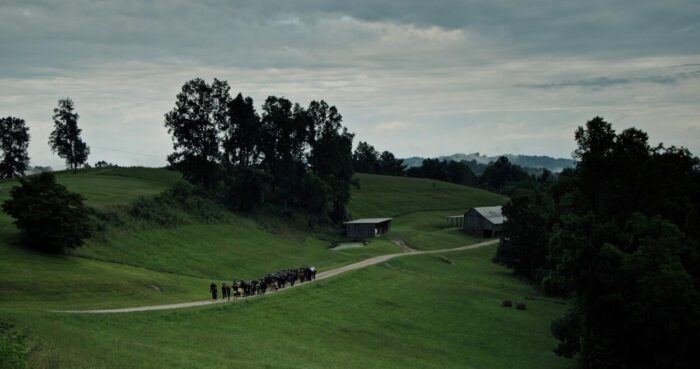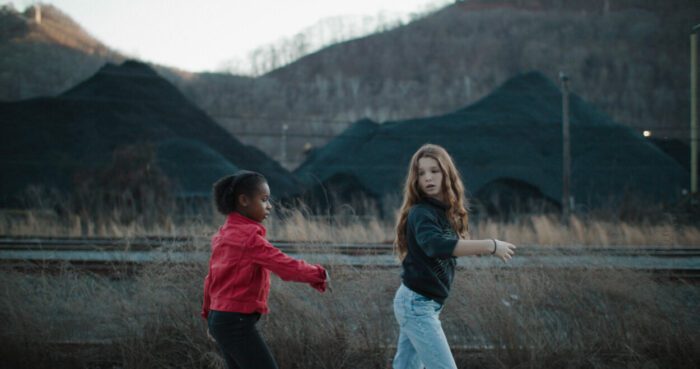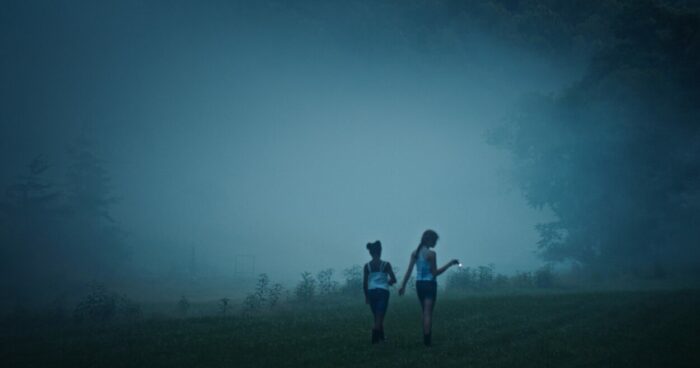King Coal begins and ends with a funeral, an Appalachian ritual elegizing a victim of the film’s personified subject. First in an elegant processional long shot framed against the beauty of the mountainous West Virginia backdrop, then later up close and personal as the mourners sing and pray, the scene is one of immense lyricism and power. It’s also unusually intimate, with its extreme close-up—just inches away—from the mourners. Some might wonder about the presence of the camera crew in such a personal, poignant moment, but King Coal is a film that aims to create a personal, subjective truth about its controversial subject.

In a way, its opening (and closing) funeral might be seen as a celebration of life and a eulogy for the film’s subject itself. King Coal is a highly expressive, even poetic film; to call it a documentary feels like something of a misdirection. It’s neither a traditional expository documentary with talking heads and methodical explainers, nor is it a verité portrait of a protagonist set in a specific place and time. King Coal employs some of the techniques of both styles but is neither, instead offering a more lyrical, even elegiac approach to its subject matter.
For Elaine McMillion Sheldon, an Oscar-nominated filmmaker (for the 2017 short subject Heroine(e)), King Coal is a place personified, a resource so strong, so omnipresent in the region where she grew up it is inescapable. King Coal provides livelihoods and takes lives. It creates communities and breaks hearts. Its subjects sing, dance, and celebrate at festivals and pageants. More than just a resource, King Coal IS Central Appalachia, and Central Appalachia IS King Coal.

McMillion Sheldon frames her study of King Coal through the eyes of a young girl, a redheaded tween who stands in as something of an analogue for the filmmaker, in shots that are staged and composed but presented in ways that feel naturalistic. We follow the girl—often in conversation with her black best friend and classmate—as they traipse through the woods, explore their town’s neighbourhoods and rituals, and dream of the future. It’s an unlikely but evocative approach, one that presents the region’s dependence upon King Coal as a young girl would experience and come to understand it.
That the film is so stunningly shot makes the approach immersive. Curren Sheldon, McMIllion Sheldon’s husband, the cinematographer, manages to capture the evocative beauty of the region in its different seasons with stunning compositions and deep colors. But there is also the omnipresent terror there as well. Even as the locals celebrate, they mourn the loss of those who’ve died in the mines. King Coal might be heralded as the name of the local sports team or pageant winners, but McMillion Sheldon still makes clear its long pattern of discrimination against non-white minors, its exploitation of workers, its resistance to unionization, and its obvious physical dangers.
The young girl’s movements, choreographed by the dancer and filmmaker Celia Rowlson Hall, provide a lithe, serpentine saunter through the region’s activities and ecosystem. A coal miner’s daughter herself, McMillion Sheldon’s narration, rendered in the occasional poetic voice-over, treats old King Coal himself as a tragic figure, a fallen idol whose faults one can just now begin to speak of, now that his reign is diminished if not entirely deposed. “I remember learning that if I said anything bad about the King, I was betraying my loved ones,” she says, though it’s clear her young stand-in will learn from, and come to terms with, that personification.

There’s just enough exposition here, though, to bring the film’s unusual poeticism into sharp focus. For viewers less familiar with the region, with the mining efforts and conflicts, the disease and death, and the long fights over unionization, King Coal offers just enough history to contextualize its highly personal elegy. The coal mines cast a long shadow, one that has hovered over the filmmaker her whole life, and the film’s artful re-creation of a young girl’s immersion and enculturation—she’s beginning to understand it but dreaming of somehow escaping it—makes for a uniquely lyrical presentation.
“Who are you without a king?” asks McMillion’s narrator of her Appalachian roots at the film’s end, the funeral service concluded. There may not be a clear answer, but it’s hard to imagine a more elegantly shot, eloquently composed, lyrically framed question than this film itself.
King Coal is a selection of the 2023 Twin Cities Film Festival and currently showing in select theaters across the U.S.




